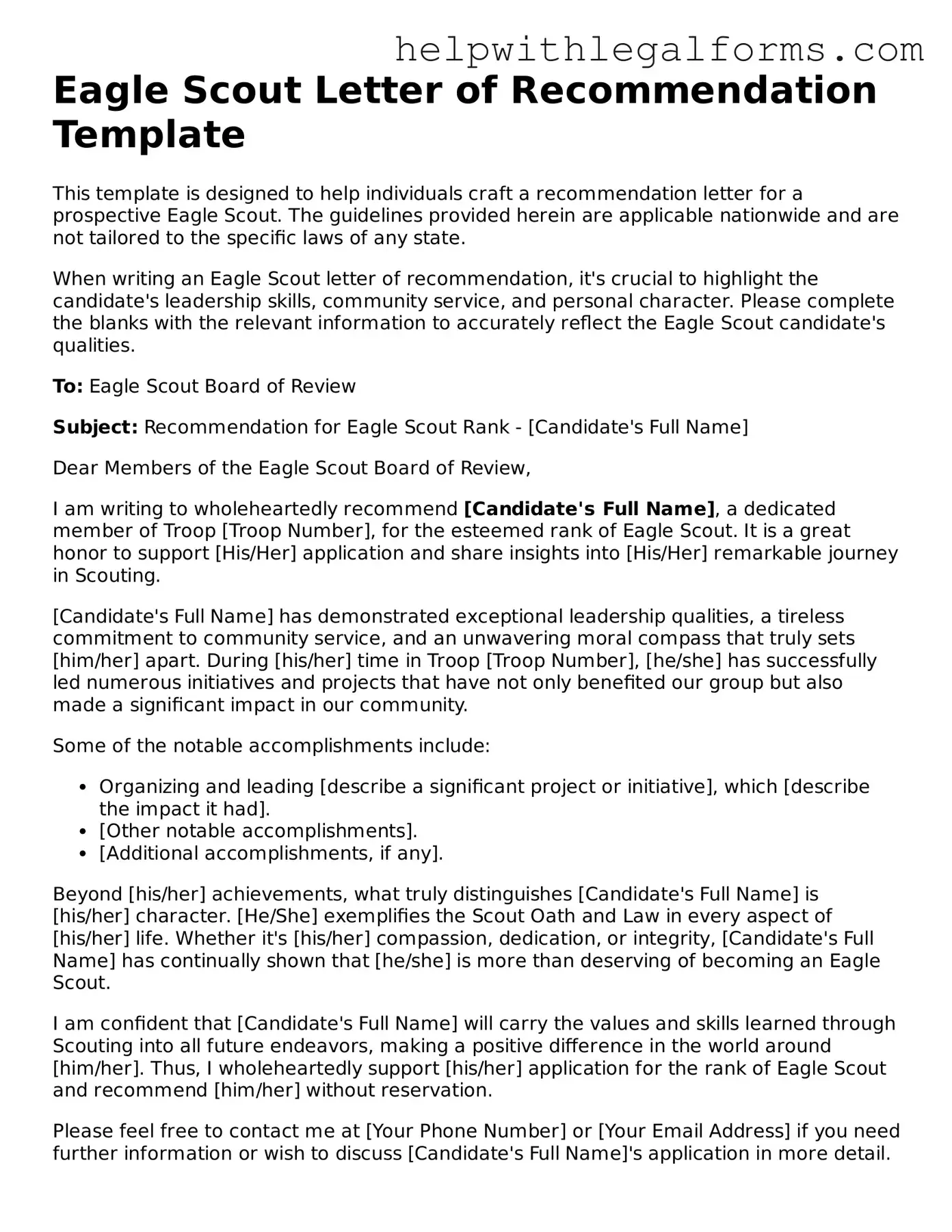What is the purpose of the Eagle Scout Letter of Recommendation form?
The Eagle Scout Letter of Recommendation form is designed to provide the Eagle Scout Board of Review with insights and evaluations of a Scout's performance, character, and achievements from perspectives outside the Scouting community. This form helps the board make informed decisions regarding a Scout's application for the rank of Eagle Scout, the highest achievement attainable in the Scouts BSA program.
Who should fill out the Eagle Scout Letter of Recommendation form?
This form should be completed by individuals who know the Scout well and can provide meaningful insights into the Scout's character, behavior, and achievements. Typically, this includes teachers, religious leaders, community leaders, or family friends. Scout leaders or relatives are not usually recommended to fill out this form to maintain objectivity in the evaluation.
How can someone get the Eagle Scout Letter of Recommendation form?
The form can usually be obtained from the local BSA council office or downloaded from the official Scouts BSA website. It’s important to ensure that the most current version of the form is used. The Scout's troop leader or an Eagle Scout counselor can also provide guidance on how to access this form.
What information is required in the Eagle Scout Letter of Recommendation form?
Those completing the form are asked to provide details about how they know the Scout and for how long, as well as their perspectives on the Scout's leadership abilities, character, and adherence to the Scout Oath and Law in their daily life. There’s also space for the recommender to provide specific examples or stories that illustrate the Scout's qualities.
Is there a deadline for submitting the Eagle Scout Letter of Recommendation form?
Yes, there is typically a deadline associated with the submission of this form, which can vary by local council or troop. It's crucial for the Scout to communicate with their Eagle Scout coach or troop leader to understand the specific timeline and ensure that recommenders are aware of the submission deadline.
Can the Eagle Scout Letter of Recommendation form be submitted electronically?
Policies regarding electronic submission can vary between local councils. Some councils may accept electronic submissions via email, while others may require the form to be printed and submitted physically. It’s important to check with the local BSA council or troop leadership for the applicable rules and procedures.
What happens after the Eagle Scout Letter of Recommendation form is submitted?
Once all required forms, including the Eagle Scout Letter of Recommendation, are submitted, they will be reviewed as part of the Scout's overall Eagle Scout Rank application during the Eagle Scout Board of Review. This board consists of adult leaders who assess the Scout's eligibility for the Eagle rank based on leadership, service, Scout spirit, and the recommendations provided. The board will then make a decision on whether to approve the Scout for the Eagle rank.
